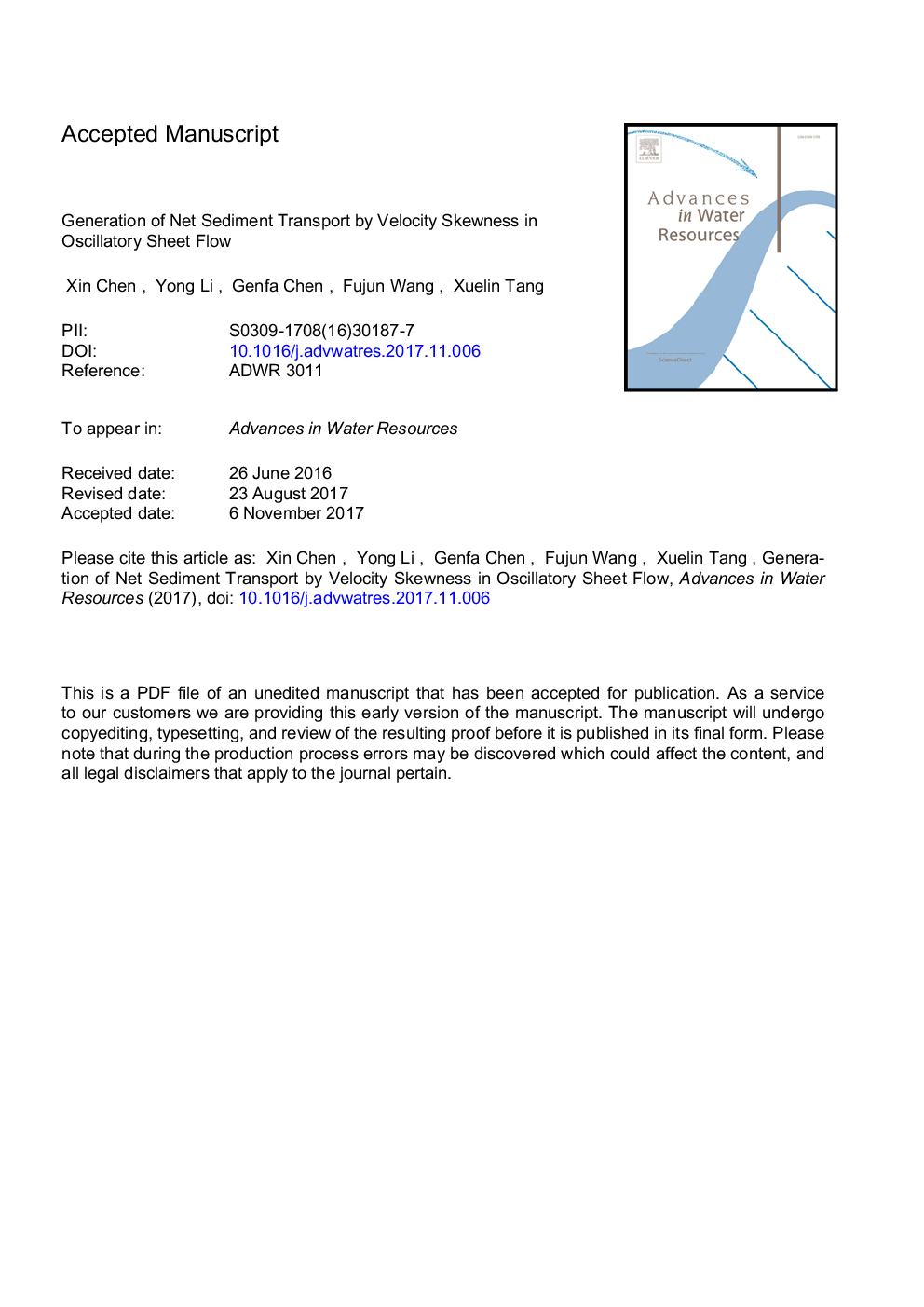| Article ID | Journal | Published Year | Pages | File Type |
|---|---|---|---|---|
| 8883418 | Advances in Water Resources | 2018 | 25 Pages |
Abstract
This study utilizes a qualitative approach and a two-phase numerical model to investigate net sediment transport caused by velocity skewness beneath oscillatory sheet flow and current. The qualitative approach is derived based on the pseudo-laminar approximation of boundary layer velocity and exponential approximation of concentration. The two-phase model can obtain well the instantaneous erosion depth, sediment flux, boundary layer thickness, and sediment transport rate. It can especially illustrate the difference between positive and negative flow stages caused by velocity skewness, which is considerably important in determining the net boundary layer flow and sediment transport direction. The two-phase model also explains the effect of sediment diameter and phase-lag to sediment transport by comparing the instantaneous-type formulas to better illustrate velocity skewness effect. In previous studies about sheet flow transport in pure velocity-skewed flows, net sediment transport is only attributed to the phase-lag effect. In the present study with the qualitative approach and two-phase model, phase-lag effect is shown important but not sufficient for the net sediment transport beneath pure velocity-skewed flow and current, while the asymmetric wave boundary layer development between positive and negative flow stages also contributes to the sediment transport.
Keywords
Related Topics
Physical Sciences and Engineering
Earth and Planetary Sciences
Earth-Surface Processes
Authors
Chen Xin, Li Yong, Chen Genfa, Wang Fujun, Tang Xuelin,
